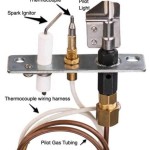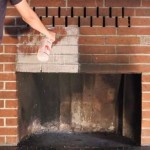The Enduring Appeal of Antique Cast Iron Fireplace Inserts
Antique cast iron fireplace inserts represent a significant element of architectural and decorative history. These inserts, designed to fit within existing fireplace openings, not only served a functional purpose by radiating heat more efficiently but also became focal points of rooms, reflecting the stylistic trends and technological advancements of their respective eras. The enduring appeal of these artifacts lies in their combination of craftsmanship, functionality, and historical significance.
The history of cast iron fireplace inserts is closely tied to the evolution of ironworking techniques and the increasing accessibility of manufactured goods. Prior to the mass production of iron, fireplaces were typically constructed of brick or stone with minimal ornamentation. The introduction of cast iron allowed for the creation of intricate designs and more efficient heat distribution. These inserts became increasingly popular throughout the 18th and 19th centuries, gracing homes from modest cottages to grand estates.
The societal shift towards more efficient heating methods and changing aesthetic preferences contributed to the decline in popularity of original cast iron fireplace inserts in the 20th century. These pieces were often removed during renovations or simply abandoned. However, a renewed appreciation for antique items and a focus on historical preservation have led to a resurgence of interest in these inserts, with many homeowners and collectors seeking to restore and incorporate them into contemporary settings.
Understanding the Historical Context of Cast Iron Fireplace Inserts
To truly appreciate an antique cast iron fireplace insert, it is essential to understand the historical context in which it was created. The designs and manufacturing techniques evolved significantly over time, reflecting changing aesthetic tastes and technological capabilities. Early inserts, from the late 18th and early 19th centuries, often featured relatively simple, classical motifs such as fluted columns, urns, and geometric patterns. These designs were influenced by the Neoclassical movement and a desire to emulate the grandeur of ancient Greece and Rome.
As the 19th century progressed, the Industrial Revolution brought about advancements in iron casting processes, enabling the production of more complex and ornate designs. Victorian-era inserts, in particular, are characterized by elaborate detailing, including floral patterns, scrollwork, and figural representations. The use of high-relief castings and intricate openwork added depth and visual interest to these pieces. Furthermore, the availability of different finishes, such as polished iron, enameled surfaces, and decorative paint, allowed homeowners to customize their fireplace inserts to match their interior décor.
The geographic location and the manufacturer also played a role in the style and quality of cast iron fireplace inserts. Certain regions, such as those with abundant iron ore deposits and established foundries, became centers of production, each developing its own distinctive style. For example, inserts produced in England often featured different decorative elements and construction techniques compared to those manufactured in the United States. Identifying the maker, if possible, can provide valuable insights into the origin and history of the insert.
Key Features and Elements of Antique Cast Iron Fireplace Inserts
Antique cast iron fireplace inserts possess a number of key features and elements that distinguish them from modern reproductions and contribute to their unique character. The material itself, cast iron, is notable for its durability, heat retention properties, and ability to be molded into various shapes. The weight of the insert is a significant factor, indicating the thickness of the casting and the overall quality of the piece.
The firebox, the area where the fire is built, is a critical component of the insert. Early fireboxes were often relatively shallow and open, with minimal provision for controlling airflow. Later designs incorporated features such as dampers and adjustable air vents to improve combustion efficiency and regulate heat output. The presence of a back panel, which protects the wall behind the fireplace from heat damage, is another important element to consider.
Decorative elements are central to the aesthetic appeal of antique cast iron fireplace inserts. These can include intricate castings depicting scenes from mythology, nature, or everyday life. The style of the ornamentation often reflects the prevailing artistic trends of the period, such as the Rococo, Gothic Revival, or Art Nouveau movements. The condition of the decorative elements is a key factor in assessing the value and desirability of the insert. Chips, cracks, and missing pieces can detract from its overall appearance and reduce its worth.
The grate, which supports the fuel within the firebox, is another important feature. Original grates were typically made of cast iron and designed to allow air to circulate beneath the fire. The design of the grate can vary depending on the type of fuel that was intended to be burned, such as wood or coal. The presence of an original grate in good condition adds to the authenticity and historical value of the insert.
Considerations for Collecting and Restoring Antique Cast Iron Fireplace Inserts
Collecting and restoring antique cast iron fireplace inserts requires careful consideration and attention to detail. Before acquiring an insert, it is essential to thoroughly inspect it for any signs of damage, such as cracks, warpage, or rust. These issues can affect the structural integrity and functionality of the piece. A professional assessment by a qualified restorer or antique dealer is recommended, especially for inserts of significant value or historical importance.
When restoring an antique cast iron fireplace insert, the primary goal should be to preserve its original character and integrity. Avoid using harsh chemicals or abrasive cleaning methods that could damage the surface or remove delicate details. Gentle cleaning with mild soap and water is usually sufficient to remove dirt and grime. In cases where rust is present, it can be carefully removed using specialized rust inhibitors and wire brushes.
Repairing cracks or broken pieces should be undertaken by a skilled professional with experience in cast iron repair. Welding or brazing can be used to join broken components, but it is important to use appropriate techniques and materials to ensure a strong and durable bond. Reproduction parts, such as grates or decorative elements, can sometimes be sourced to replace missing or damaged originals, but it is preferable to retain as much of the original material as possible.
The finish of the insert is another important aspect of the restoration process. Original finishes can range from polished iron to enameled surfaces to decorative paint. The choice of finish should be based on historical accuracy and the desired aesthetic effect. Polished iron finishes require regular maintenance to prevent rust, while enameled surfaces offer greater durability and resistance to corrosion. Decorative paint should be applied using techniques that are consistent with the original methods.
Finally, it is important to ensure that the restored insert is properly installed and vented to meet current safety standards. A qualified professional should be consulted to ensure that the fireplace and chimney are in good working order and that the insert is installed correctly. Proper ventilation is essential to prevent the buildup of carbon monoxide and other harmful gases.
The pursuit of antique cast iron fireplace inserts is a journey into the past, offering a tangible connection to the craftsmanship and design sensibilities of previous generations. By understanding the historical context, key features, and restoration considerations, enthusiasts can appreciate and preserve these enduring artifacts for years to come.

A Mid Victorian Cast Iron Fireplace Insert Lassco England S Prime Resource For Architectural Antiques Salvage Curiosities

Antique Fireplaces Full Circle Architectural Antiques

Antique Cast Iron Franklin Insert

Reclaimed Antique Victorian Cast Iron Insert E A Reclamation

Antique Fireplaces Full Circle Architectural Antiques

Original Cast Iron Tiled Insert Ace Reclamation

Vintage Cast Iron Fireplace Insert Grate Basket Accessories Home Decor Lovebirds Rustic Lighting Heavy Black Gold Birds Sweden

Antique Cast Iron Tiled Insert Chester Paint Stripping

Antique Edwardian Art Nouveau Cast Iron Fireplace Insert At 1stdibs Deco

Reclaimed Antique Victorian Cast Iron Insert E A Reclamation
Related Posts








